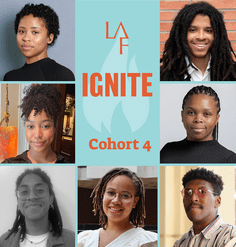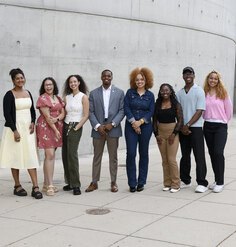Olmsted Scholar Feature: Sustainable Sediment Management in the Los Angeles Basin
By Nathaniel Oakley, 2015 National Olmsted Scholar Finalist
Towering above the Los Angeles basin at the kink in the San Andreas Fault lies the transverse San Gabriel Mountain range. Rising over 10,000 feet into the sky at its highest point, it is known for its destructive debris flows as written about extensively by John McPhee and others. The tectonic force of the Pacific Plate grinding against the North American plate uplift the mountain range at the rate of one millimeter per year (fast in geologic time), and the repeated cycle of denuding conflagrations and orographic precipitation erase much of that progress.
Toward the western end of the range, the headwaters of the Arroyo Seco River (a major tributary of the Los Angeles River) make their way into a watershed that is over 95% urbanized. At the moment, this highly developed watershed is protected from flooding and the ever-eroding San Gabriels by a series of anthropogenic infrastructural interventions, the largest being the Devil’s Gate Dam and a series of concrete channels that the Arroyo now flows through.
A week ago the rains began in Los Angeles, slicking the streets into road accidents, crumbling the mud from the hillsides and toppling the houses into canyons, washing the world into the gutters and storm drains... When the rains come in Los Angeles, they always take people by surprise.
Neil Gaiman, American Gods
The Dam, plagued by a history of sedimentation, is now at half of its original capacity. Normally, excess sediment is excavated and brought to nearby landfills, but recent fires and rain events have left L.A. County playing catch-up in order to maintain reservoir capacity. If storage behind Devil’s Gate is compromised, communities along the Arroyo are potentially at risk of flooding. Surprisingly, many of these nearby inhabitants were unaware there ever could be a flood risk as most of the time the channel remains dry, save for urban runoff trickling through the low-flow portion of the channel.
In addition to the sediment build up, downstream conditions of the Arroyo Seco are bleak. Wildlife habitat has been replaced with cold concrete, and most of it remains inaccessible to the public as the invert can drop off precariously to depths of 30 feet in some reaches and can quickly turn dangerous during storms. During heavy rains motorists have found themselves stranded, clamoring to the channel walls, requiring swift water rescue. Very little water that stems from the Arroyo Seco is allowed to recharge groundwater supplies, and the habitat-building sediment it delivers from the San Gabriels is trapped, destined for nearby landfills.
A strengthening El Niño climate cycle is predicted heading into 2016, which will hopefully give drought-stricken California much needed precipitation. With the return of wet weather, fast-moving stormwater will return to the Arroyo Seco delivering sediment from the crumbling slopes of the San Gabriel Mountains. Devil’s Gate Dam will be tested, while potential aquifer-replenishing rainwater will be sent directly to the ocean via impervious channels. Herein lies an opportunity for discussion and implementation of unique water conservation and sustainable sediment management design strategies that go beyond the business as usual, Sisyphean, approaches of fighting sediment and flushing rainwater out of the city.
My Senior Project at UC Davis, The Barrier: Seeking Sustainable Sediment Management Solutions for Devil’s Gate Dam, discusses these issues and proposes regenerative design strategies and interventions to balance natural sediment delivery, water storage, flood control, and habitat restoration.The report and a short video discussing this research can be accessed at:
- The Barrier: Seeking Sustainable Sediment Management Solutions for Devil’s Gate Dam: http://issuu.com/send2nate/docs/oakley_thebarrier_final
- Short video: https://vimeo.com/141816349
In May, Nathaniel Oakley received his Bachelor of Science in Landscape Architecture degree from the University of California, Davis. He is currently working as a Landscape Architect Assistant at Callander Associates in the Sacramento area.










